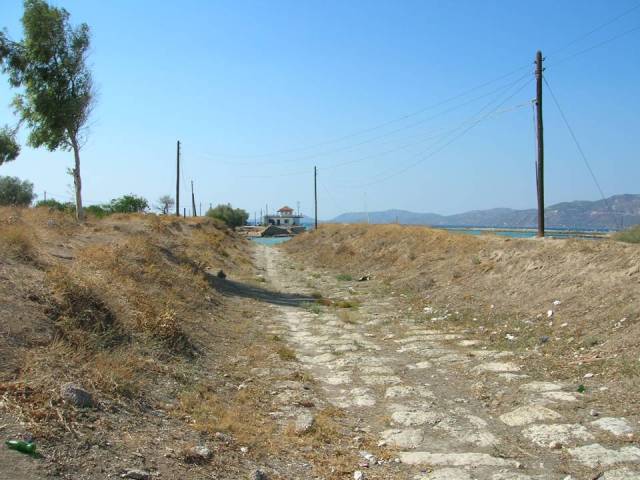Who was Niketas Ooryphas, and what was he doing on the Isthmus in AD 872? Over the next few days, I’ll provide a truncated version of the talk I delivered two weeks ago in San Antonio at the annual meeting of the Archaeological Institute of America. The talk was titled, “Niketas Ooryphas Drags His Fleet: Portaging the Corinthian Isthmus in 872 AD” and based on an analysis of the translated texts of Life of Basil (Theophanes Continuatus), John Skylitzes & George Kedrenos, John Zonaras, and Pseudo-Sphrantzes’ Chronicon Maius (aka Makarios Melissenos).
My talk set the problem in the following way.
“Of the eight recorded instances of military galleys being carried over the Isthmus of Corinth, the crossing of the Byzantine admiral Niketas Ooryphas in 872 AD is clearly the historical outlier. The episode is a remarkable one because it represents the first known portage event since Octavian crossed the isthmus in 30 BC after the Battle of Actium and the only instance of a Byzantine admiral transferring fleets.
And yet the incident of 872 has never been properly investigated. As one indication of the lacuna, scholars since the early 1930s have cited as evidence for the portage the so-called Longer Chronicle of Pseudo-Sphrantzes, a 16th century narrative that makes use of Byzantine histories written 500-700 years earlier. Our primary evidence for the person of Niketas Ooryphas and his campaigns in the west actually comes from the Vita Basilii, the Life of the Emperor Basil I, founder of the Macedonian dynasty, commissioned, perhaps even written, by Basil’s grandson Constantine VII Porphyrogenitus around the mid-10th century. The biography is preserved as the second section of a series of of 10th century chronicles collected under the name Theophanes Continuatus, so named because of the author’s claim to be continuing the history of the Byzantine chronicler Theophanes the Confessor. These sources have always raised difficult questions for modern interpreters of the diolkos road, the trans-isthmus portage rail running eight kilometers from Corinthian to Saronic Gulfs:
Did Niketas Ooryphas actually carry his ships over the isthmus via the diolkos, indicating the road was still in use some 1,600 years after its construction and 900 years after its last recorded use? Or should the account be read as a literary invention by clever writers aware of their ancient history that indicates nothing about actual overland trans-shipment after the Roman era?
To such questions, diolkos scholars have given three different answers:
- Niketas’ portage was a real episode that proves the diolkos road was operable through the 9th century, or, alternatively, was repaired and put back into use in the 9th century.
- The portage may have occurred but not via the diolkos road. Nero’s canal construction in 67 AD left a broad gash in the road at the Corinthian Gulf end. If ships were carried over the isthmus, they went over via a different route.
- The portage is a literary allusion and probably an invention of clever Byzantine historians
Since the modern interpretations of the diolkos road have been erected largely on the interpretation of ancient texts, it is fitting to reevaluate the latest text that has caused serious problems to the interpretation of the road. In this talk, I aim to show how the account lies fully within the ancient tradition of narrating ship transfers over the Corinthian Isthmus—as an extraordinary, brilliant, heroic, and strategic deed demonstrating the skill of the general effecting the portage. Understanding the dramatic and strategic nature of portaging ships within the genre of historical writing not only helps us to interpret the material road dug up by Nikolaos Verdelis, but also appreciate how 10th century Byzantine writers, including the Emperor Constantine VII, interepreted and understood the carrying of ships.”


Leave a comment